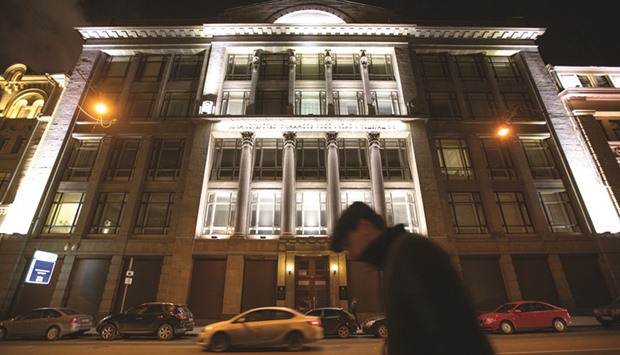Russia’s finance minister called for a tighter fiscal policy yesterday, signalling the ministry will fight hard for its three-year budget when submitting proposals for government discussion in mid-October.
With lower oil prices and Western sanctions curtailing the country’s revenues, the ministry has urged the freezing of nominal expenditure in 2017-2019 at the 2016 level, which would actually mean a cut once inflation is taken into account.
A group of economists close to the Kremlin and some ministers have been calling for higher spending as a cure for economic recession.
Giving the first concrete glimpse of his budget proposals on Friday, Finance Minister Anton Siluanov vowed to keep spending intact, drawing more money from state companies, but keeping the tax regime nearly unchanged.
Russia has returned to three-year budgeting after a hiatus following the annexation of Ukraine’s Crimea in 2014 and volatility in oil prices which made most planning futile.
“If we base our plans, our financial plans, on more favourable forecasts, fully understanding that they will not materialise, we will end up facing inflated plans, lack of money...and the budget structure will loosen,” Siluanov told the Moscow Finance Forum.
Central Bank Governor Elvira Nabiullina supported his calls, saying at the same forum there was an “understanding” in the government to bring inflation down to 4% next year, which means restraints on government spending.
Siluanov said he did not support calls to raise taxes over the next three years, preferring other means to ensure revenues and finance the budget deficit.
But he added there would be be increases in the energy sector’s taxation.
Russian President Vladimir Putin, seeking re-election in 2018, has been vocal about keeping taxes low for the public and businesses.
Siluanov said higher dividends would help a lot.
In April, the government ordered major state companies to pay out 50% of their profits in dividends this year.
The ministry has proposed to extend the policy over the next three years.
Some major companies, such as Gazprom and Rosneft, have however fought the policy and ended up paying less than the government ordered this year. Deputy Prime Minister Arkady Dvorkovich signalled possible opposition to the ministry’s plans. “This should be very carefully thought through,” Dvorkovich told the same forum yesterday.
“What would be impact on investment programmes? What project may have to be sacrificed with such level of dividend drawings?”
Siluanov said that revenues from dividend payouts by state companies could amount to 280bn roubles a year.
The ministry wants to bring the budget deficit, forecast at 3.2-3.3% of gross domestic product this year, down by 1 percentage point annually to around 1% of GDP by 2019.
To finance it, the ministry will continue borrowing, at home and abroad.
With privatisation proceeds expected to fall short of target this year, Siluanov said foreign borrowing might be higher next year, after a successful Eurobond placement on Thursday.
“We may come back to the foreign borrowing volumes achieved in previous years — about $7bn,” Siluanov said.
Russia last borrowed that much in 2013. “We have to coordinate our plans with the central bank to make sure that those inflows do not seriously influence the strengthening (of the rouble), so that they don’t affect our assessment of the balance of payments,” Siluanov said.
Meanwhile inflation expectations in Russia subsided after the central bank signalled last week that further rate cuts were unlikely this year, the bank’s Governor Elvira Nabiullina told CNBC in an interview. The central bank cut its key rate by 50 basis points to 10 percent last week, only its second cut so far this year. It is aiming to bring inflation Down to 4% by the end of next year.
“We wanted to tell market players about our position that the trajectory of the reduction of the key rate is going to be aimed precisely at achieving our inflation target,” Nabiullina said, according to a transcript of the interview provided by CNBC.
Nabiullina added problems related to Russian economic growth were not determined by the level of the country’s key rate but rather were rooted in structural limitations.

A pedestrian passes the headquarters of Russia’s ministry of finance in Moscow. Russia’s finance minister called for a tighter fiscal policy yesterday, signalling the ministry will fight hard for its three-year budget when submitting proposals for government discussion in mid-October.


